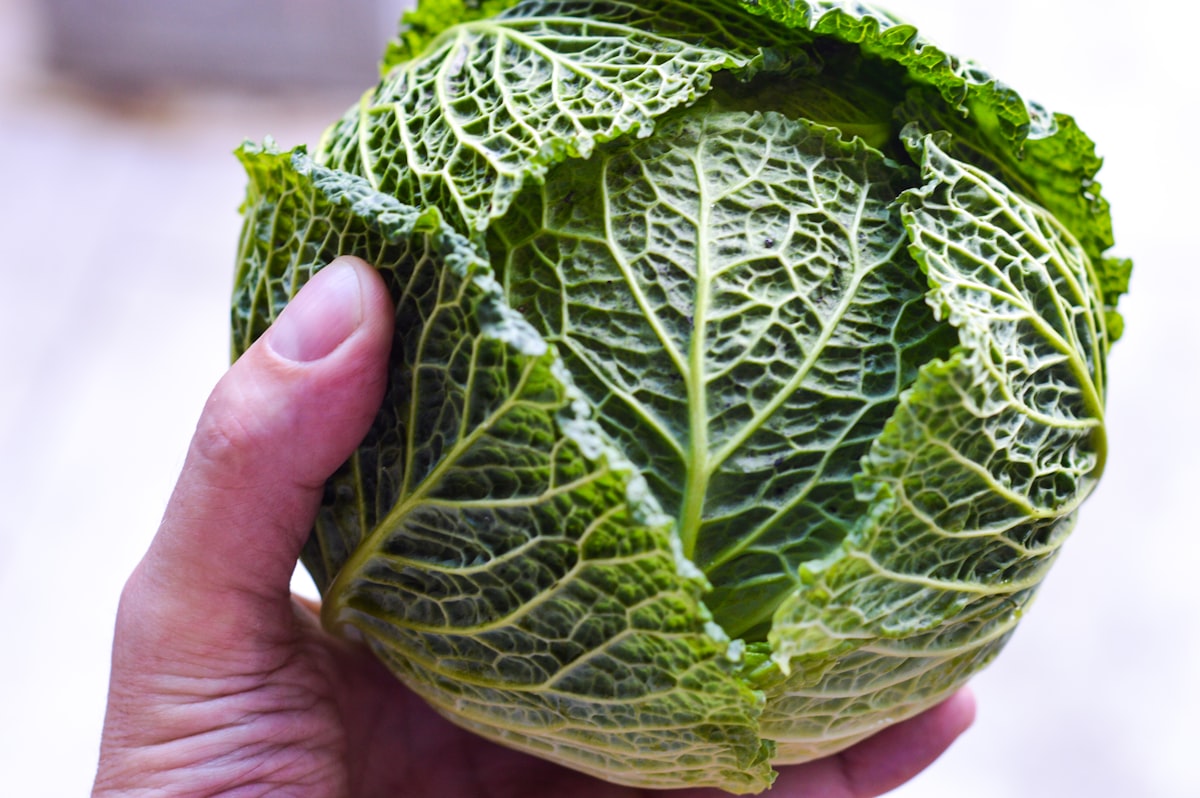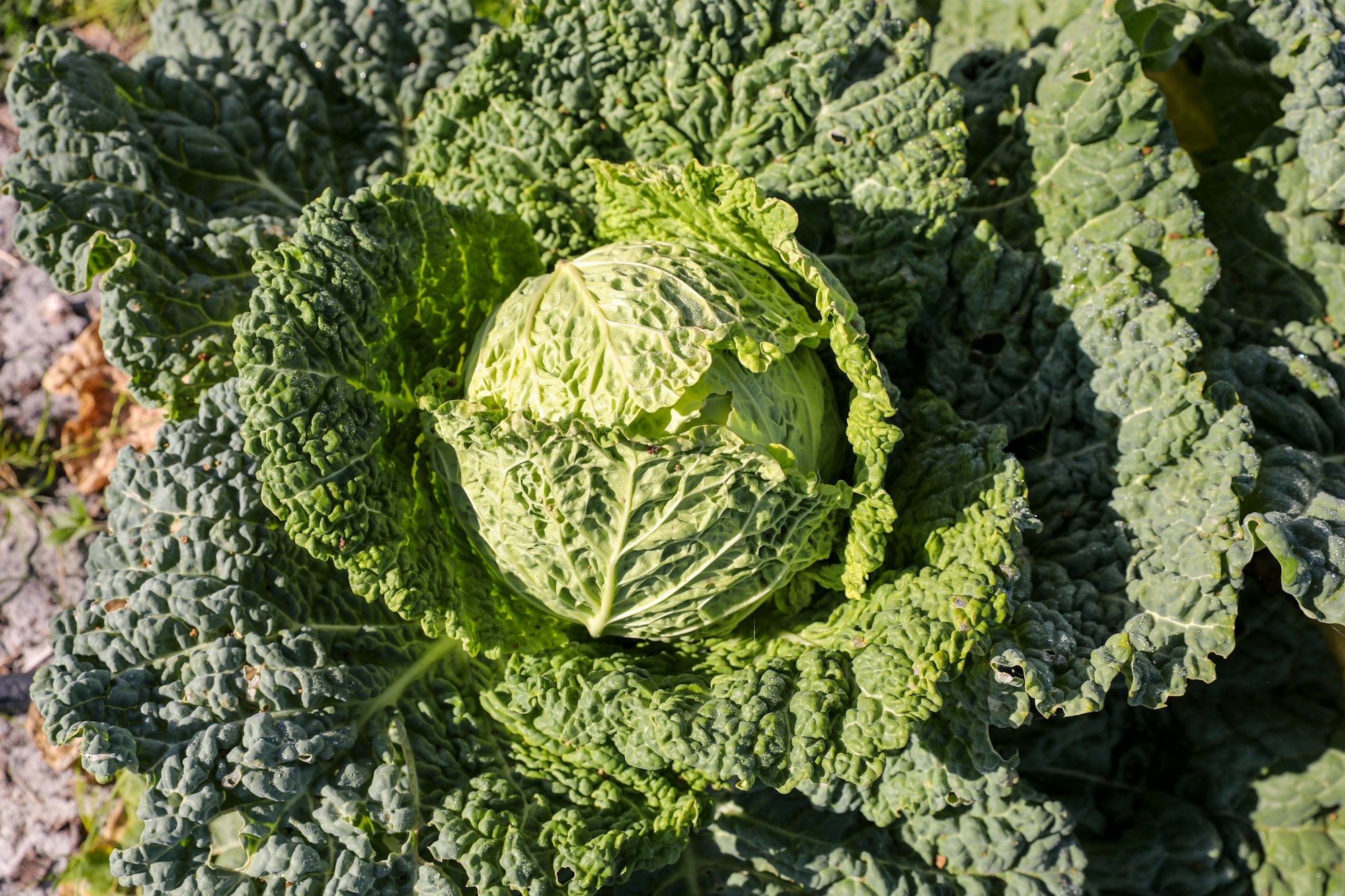How to Grow Savoy Cabbage
Savoy cabbage, a variety of Brassica oleracea, is a cool-season crop known for its distinctive wrinkled leaves and tender texture.

Table of Contents
Learning how to grow this versatile vegetable in your garden is a rewarding experience, providing fresh, nutritious produce.
To successfully grow Savoy cabbage, plant seeds indoors or directly in the garden, ensuring optimal conditions such as 6 hours of sunlight, well-draining soil, and adequate space between the plants.
You can harvest delicious Savoy cabbages for your favorite dishes with proper care in just a few months.
About Savoy Cabbage
Savoy cabbage is a cultivar of Brassica oleracea, with distinct wrinkly leaves and a milder flavor than traditional green cabbage.
It is a hardy plant grown since the seventeenth century, standing out visually with its crinkled leaves and vibrant green color.
This leafy green vegetable is versatile and can be used in various dishes, including salads, providing nutritional benefits.
When growing Savoy cabbage, it's essential to practice crop rotation, alternating with other plants to prevent nutrient depletion and minimize pest and disease pressure.
Growing Savoy Cabbage
Before you plant your savoy cabbage seeds, choose whether you'd like a spring or fall harvest.
If you opt for a spring harvest, start your seeds indoors early, about 6-8 weeks before your last spring frost date. For a fall harvest, sow seeds directly into the ground in mid-summer.
When planting, select a site that receives at least 6 hours of sunlight daily and has a soil pH between 6.5 and 6.8.
Space your rows 2 feet apart, and place plants 15-18 inches apart within the rows. Ensure the soil is moist, well-draining, and rich in organic matter to provide optimal conditions for your savoy cabbage.

Caring for Savoy Cabbage
Sun and Temperature
Savoy cabbage thrives in cooler temperatures, making it an ideal crop for early spring.
Ensure your cabbage plants receive full sun by placing them in a location with at least 6 hours of direct sunlight daily.
Water and Humidity
Consistent watering is crucial for cabbage health; aim to provide 1 to 1.5 inches of water per week, depending on rainfall.
Maintain soil moisture using mulch from compost, finely ground leaves, or bark.
Soil
Choose a well-draining soil rich in organic matter, such as compost or aged manure.
The ideal pH for growing savoy cabbage is between 6.0 and 6.5, so test your soil and make any necessary adjustments.
Fertilizer
To provide your cabbage plants with essential nutrients, apply a balanced fertilizer (10-10-10) or an organic alternative like fish emulsion.
Apply fertilizer according to the package instructions, taking care not to over-fertilize as this may cause lush foliage growth at the expense of cabbage head development.
Repotting
Begin by sowing seeds indoors 6-8 weeks before your area's last expected frost. Transplant the cabbage seedlings outdoors, spacing them 15-18 inches apart, with 24 inches between rows.
Pruning and Propagation
Pruning is generally unnecessary for savoy cabbage. However, remove the affected leaves if your cabbage is plagued by pests or diseased foliage.
Propagation can be achieved by simply sowing new seeds in the desired location.
Troubleshooting Plant Problems
Growing Problems
If your cabbage doesn't form a head, it could be due to inconsistent moisture levels in the soil.
Apply 1 to 1.5 inches of water per week, depending on rainfall, and avoid overwatering or underwatering your savoy cabbage.
To prevent issues such as stunted growth and lack of head formation, practice good garden management by rotating your crops.
Do not plant savoy cabbage in areas where cabbage, broccoli, cauliflower, kale, or Brussels sprouts grew within the last two years.
Pests and Diseases
Aphids and flea beetles are common pests affecting your savoy cabbage plants.
To repel these insects, apply insecticidal soap or botanical insecticides, ensuring that you follow the product's labeled instructions.
Downy mildew is another common disease affecting savoy cabbage, causing yellow or pale green spots on leaves.
Combat this issue by providing adequate air circulation and keeping the plant's foliage dry.
Companion Planting
Companion planting can help prevent pests and promote healthy growth for your savoy cabbage.
Planting cabbage near aromatic herbs like thyme, rosemary, and sage can help to repel pests like aphids and flea beetles.
Also, consider planting your savoy cabbage in close proximity to crops like beans, peas, and celery, which can provide mutual benefits in terms of growth and pest control.
Conclusion
Savoy cabbage is a versatile and hardy plant, thriving in cooler temperatures and frost.
To grow it successfully, transplant the seedlings, allowing 2 feet between rows and 15-18 inches between plants, ensuring they receive at least 6 hours of sunlight daily.
Soil should be moist, well-draining, and rich in organic matter with a pH between 6.5 and 6.8.
When it comes time to harvest, you'll enjoy this nutritious variety's milder flavor and lighter texture. Happy gardening!
Frequently Asked Questions
How to grow Savoy cabbage from seed?
You can start Savoy cabbage seeds indoors six weeks before the average last frost date in your area.
Transplant seedlings 12-18 inches apart in rows 18-24 inches apart when they're strong enough.
Direct seeding is also an option, but be aware it takes up more space in the garden for a longer period.
Growing Savoy cabbage in containers
Growing Savoy cabbage in containers is possible. Choose a large container (at least 15 inches deep and wide) with drainage holes.
Fill it with well-draining, fertile soil, and plant the seedlings at the appropriate spacing. Ensure the plants receive consistent watering and provide support to prevent them from toppling.
When is the best time to plant Savoy cabbage?
The best time to plant Savoy cabbage depends on your desired harvest season. Start seeds indoors six weeks before the last frost date for a spring harvest.
For a fall harvest, direct sow seeds or transplant seedlings during July and August for zones one through six and in August and September for zones seven through ten.
How long does it take for Savoy cabbage to mature?
The time for Savoy cabbage to mature depends on the variety, with some taking around 80 days and others taking up to 100 days.
The maturity days can be found on the seed packet or plant description. Check the specific requirements of your chosen variety for a successful harvest.
What is the ideal spacing for Savoy cabbage?
The ideal spacing for Savoy cabbage is to plant the seedlings 12-18 inches apart, with rows 18-24 inches apart.
This spacing allows for proper air circulation, which helps prevent disease, and ensures each plant has enough room to grow and produce a healthy cabbage head.
Remember to keep the soil firm around the seedlings and water them well after transplanting.


